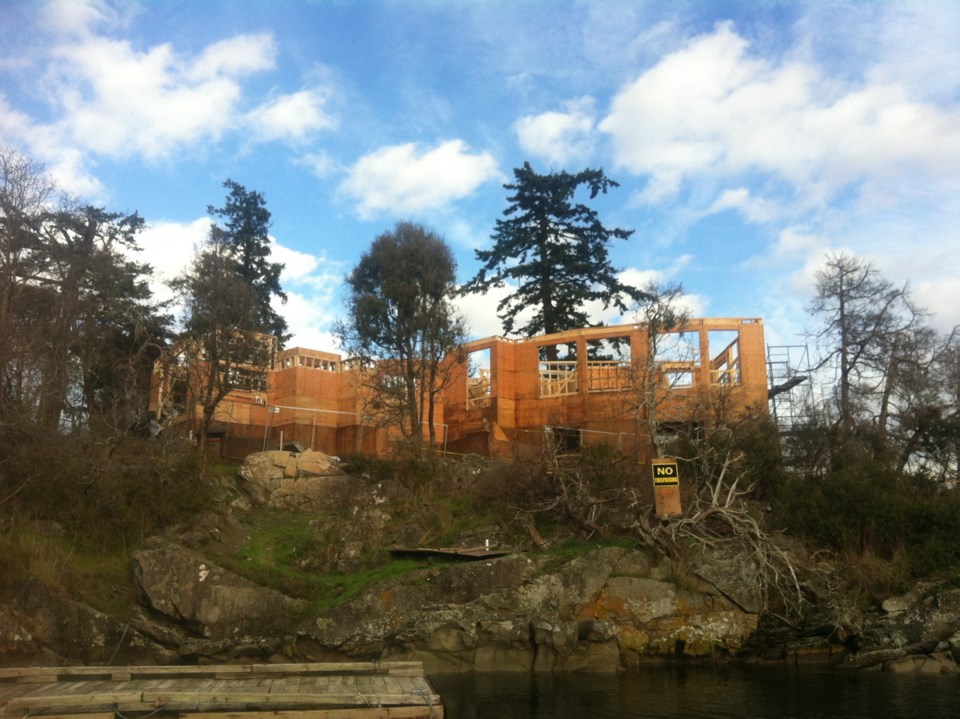The B.C. government says it will lead the charge to buy the controversial Grace Islet property, where a luxury home was being built over a First Nations burial ground.
The purchase, announced Thursday, is in partnership with First Nations and the Nature Conservancy of Canada.
“I’m very pleased with all involved and that we are able to balance all interests,” said B.C. Forests Minister Steve Thomson.
No details about the purchase price for the 0.78-acre island in Ganges Harbour will be released until the agreement is finalized, likely in February. The province will chip in and has offers from other parties to contribute, Thomson said.
The Nature Conservancy will hold ownership of Grace Islet and complete cultural and ecological restoration with local First Nations.
“We’re really happy with this. Our ancestors can rest in peace and our elders can stop crying,” said Tseycum Chief Vern Jacks. Local chiefs and elders will meet to discuss next steps. “And we still need to change policies that are unfair to our people.”
B.C. Assessment said the total value of the property as of July 2014 was $735,000. The land was valued at $590,000 and the buildings $145,000.
In the 1970s, Grace Islet was recorded as part of an ancient First Nations village in Ganges.
Alberta businessman Barry Slawsky bought the property in 1990 for $270,000 with the intention of one day building his retirement home there.
Exposed human remains were discovered on the islet by kayakers in 2006. Archeologists later documented about 20 burial cairns and cultural features.
Concern over preserving the gravesites heated up after Slawsky began construction of a home on the islet in 2012.
Since then, several First Nations, politicians from all levels of government and community members have protested the construction.
Construction stopped Dec. 18 as the government moved to resolve the issue.
First Nations burial sites established before 1846 fall under heritage legislation as artifacts and do not have the same protections as cemeteries.
Last fall, First Nations said they would pursue legal action to assert title rights on the land if the government did not intervene. Much of the home and foundation were constructed over the summer and fall months, encasing at least one known burial cairn and damaging another.
“Our hope was that they’d take this seriously and do something,” said Cowichan Tribes Chief William Seymour.
In November, he sent the government a notice of title claim, stating the Crown infringed on aboriginal title over an area occupied by First Nations, a known burial site and registered archeological site when it allowed private ownership.
However, Seymour was among several chiefs who agreed in December to give the government time to negotiate a solution with the landowner. He said he’s glad action was finally taken and hopes the house will be dismantled and the graves preserved.
Gary Holman, NDP MLA for Saanich North and the Islands, who lobbied for the protection of Grace Islet, said he was surprised by Thursday’s announcement.
“We’ve been beating our heads against the wall on this for months,” Holman said.
“But this is great news. Congrats to Minister Thomson.”
Holman said many groups played a role in pressuring the government to act.
“But it did seem, in the end, First Nations threatening to go to court made the difference,” he said, adding a ruling in favour of title rights on private land could have set a huge precedent.



